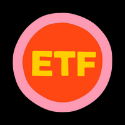Step out for yield in fixed income
Historically, when the central bank starts cutting rates, cash tends to fair the worst. While we think shorter duration strategies still have a place in portfolios, it may be time to consider adding duration to diversify short term holdings.
Related Materials-1,Source-1
Related Materials-2,Source-2
Performance data represents YTD performance. Performance data quoted represents past performance. Past performance and does not guarantee future results. Investment return and principal value will fluctuate with market conditions and may be lower or higher when you sell your shares. Current performance may differ from the performance shown. For most recent month-end performance and standardized performance, click on the fund names above.
The Morningstar RatingTM for funds, or "star rating", is calculated for managed products (including mutual funds, variable annuity and variable life subaccounts, exchange-traded funds, closed-end funds, and separate accounts) with at least a three-year history. Exchange-traded funds and open-ended mutual funds are considered a single population for comparative purposes. It is calculated based on a Morningstar Risk-Adjusted Return measure that accounts for variation in a managed product's monthly excess performance, placing more emphasis on downward variations and rewarding consistent performance. The top 10% of products in each product category receive 5 stars, the next 22.5% receive 4 stars, the next 35% receive 3 stars, the next 22.5% receive 2 stars, and the bottom 10% receive 1 star. The Overall Morningstar Rating for a managed product is derived from a weighted average of the performance figures associated with its three-, five-, and 10-year (if applicable) Morningstar Rating metrics. The weights are: 100% three-year rating for 36-59 months of total returns, 60% five-year rating/40% three-year rating for 60-119 months of total returns, and 50% 10-year rating/30% five-year rating/20% three-year rating for 120 or more months of total returns. While the 10-year overall star rating formula seems to give the most weight to the 10-year period, the most recent three-year period actually has the greatest impact because it is included in all three rating periods.
BlackRock provides compensation in connection with obtaining or using third-party ratings, rankings, or data.
Performance data represents YTD performance. Performance data quoted represents past performance. Past performance and does not guarantee future results. Investment return and principal value will fluctuate with market conditions and may be lower or higher when you sell your shares. Current performance may differ from the performance shown. For most recent month-end performance and standardized performance, click on the fund names above.
The Morningstar RatingTM for funds, or "star rating", is calculated for managed products (including mutual funds, variable annuity and variable life subaccounts, exchange-traded funds, closed-end funds, and separate accounts) with at least a three-year history. Exchange-traded funds and open-ended mutual funds are considered a single population for comparative purposes. It is calculated based on a Morningstar Risk-Adjusted Return measure that accounts for variation in a managed product's monthly excess performance, placing more emphasis on downward variations and rewarding consistent performance. The top 10% of products in each product category receive 5 stars, the next 22.5% receive 4 stars, the next 35% receive 3 stars, the next 22.5% receive 2 stars, and the bottom 10% receive 1 star. The Overall Morningstar Rating for a managed product is derived from a weighted average of the performance figures associated with its three-, five-, and 10-year (if applicable) Morningstar Rating metrics. The weights are: 100% three-year rating for 36-59 months of total returns, 60% five-year rating/40% three-year rating for 60-119 months of total returns, and 50% 10-year rating/30% five-year rating/20% three-year rating for 120 or more months of total returns. While the 10-year overall star rating formula seems to give the most weight to the 10-year period, the most recent three-year period actually has the greatest impact because it is included in all three rating periods.
BlackRock provides compensation in connection with obtaining or using third-party ratings, rankings, or data.
When you’re navigating any challenging environment the best approach is to remain active and flexible.
In a highly-volatile setting, we don’t rely on outsized positions or big bets on difficult-to-predict macro trends. We stay agile and make smaller, opportunistic moves.
By staying nimble, unconstrained, and well-diversified we’re able to keep our options open to seize attractive opportunities wherever they become available.
The destination remains the same, but especially in conditions like this, the wisest path is to make a little bit of money a lot of times.
How Rick Rieder seeks to make a little bit of money a lot of times
When you’re navigating any challenging environment, we believe the best approach is to remain active and flexible. By staying nimble, unconstrained, and well-diversified our Portfolio Managers are able to seize attractive opportunities wherever they become available.
Build a bond portfolio based on your client’s goals
No one bond fund can deliver equity diversification, capital preservation, and income in today’s environment. Consider ways to thoughtfully allocate across these three outcomes based on the risk level of your overall portfolio.
I’m up at 3:45 every morning. I want to know where all the markets are. I work out for an hour then the day really gets going.
I’m Rick Rieder, Chief Investment Officer of Global Fixed Income at BlackRock.
So my job is investing money for clients trying to generate returns using fixed income assets within portfolios. From being in this business for 35 years, you learn you got to be thoughtful, you got to innovate, you got to be different, and then apply that to the experience you have and the research that you’re doing.
Education for me is literally the foundation of everything. I’m chairman of the board of North Star Academy. It’s over 14 charter schools, serving 6,000 kids in the city of Newark. We started an internship program to bring high school kids in to help them with not just understanding markets, the economy, finance, but also understanding how you interface in business. We’re helping to change the future of thousands of underserved kids.
It gives you a real boost to see the difference you can make.
There’s a lot to do in a day, but when you start to see what you can get done, I think it’s safe to say that I won’t look back and wish I had slept more.
Meet Rick Rieder: Morningstar’s 2023 Outstanding Portfolio Manager
Rick Rieder, Chief Investment Officer of Global Fixed Income, has been awarded the 2023 Morningstar Award for Investing Excellence, Outstanding Portfolio Manager.1 Rick Rieder’s consistent approach to managing strategies like Strategic Income Opportunities, Total Return, Global Allocation and more have helped funds deliver long-term success.
Optimize portfolios for after-tax returns
Many advisors overlook how taxes can impact returns more than fees. BlackRock’s Tax Evaluator helps track capital gains across 7K+ funds and identifies tax-loss harvesting opportunities in portfolios to help your clients keep more of what they earn.

Featured insights
Subscribe for the latest market insights and trends
Get the latest on markets from BlackRock thought leaders including our model portfolio managers.
Please try again






